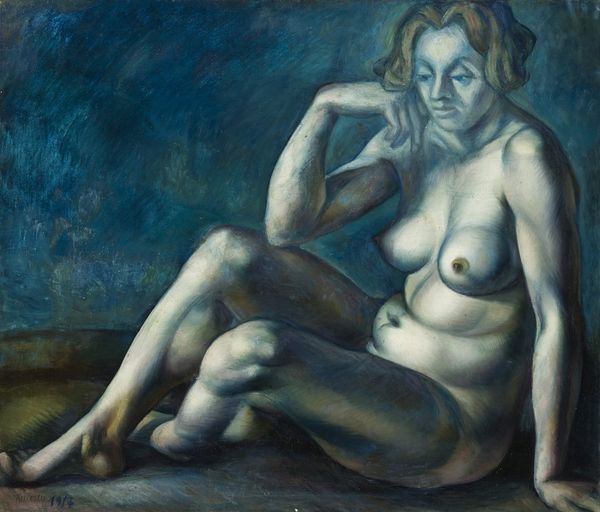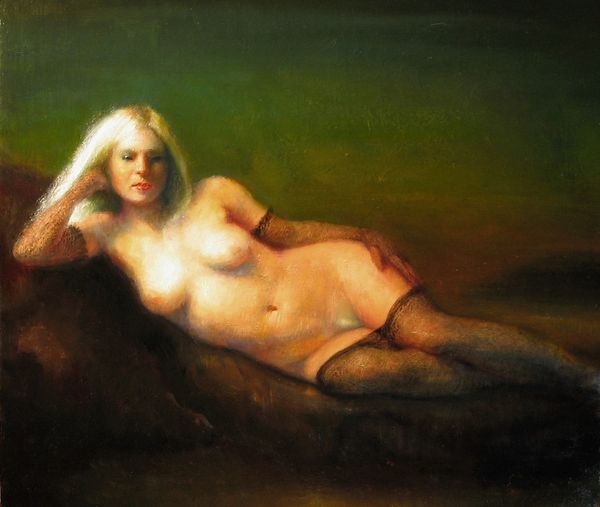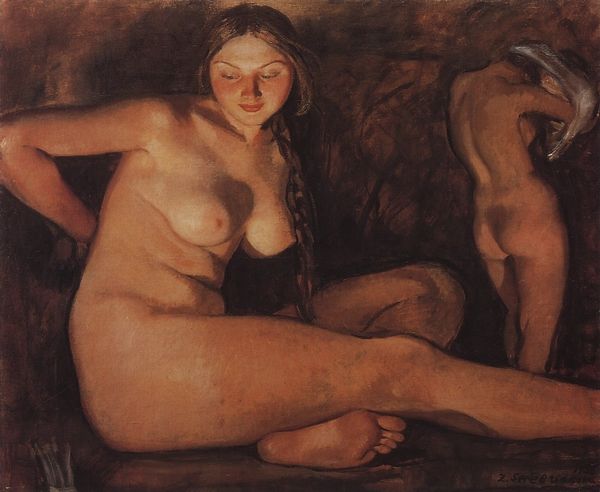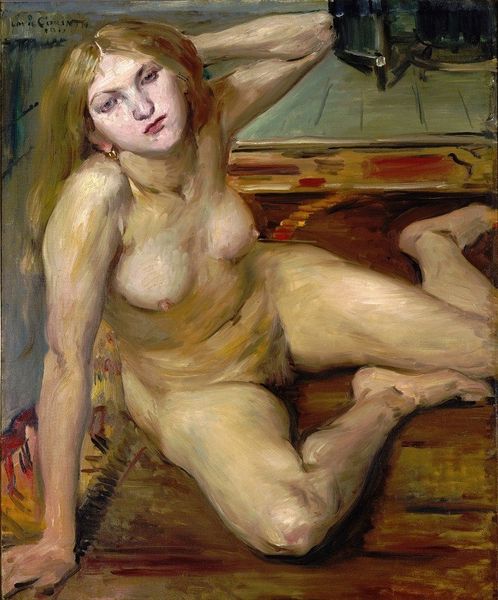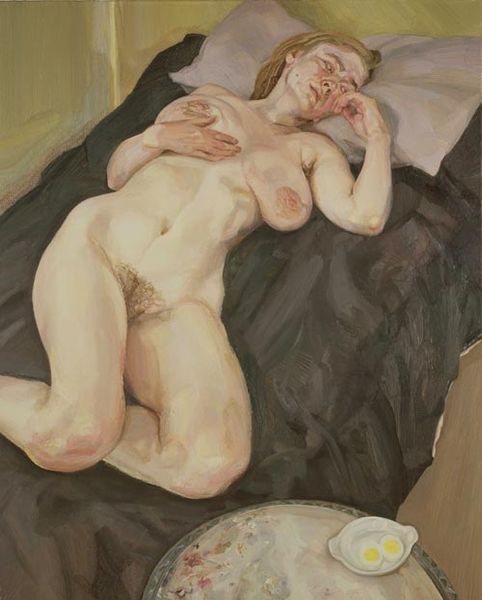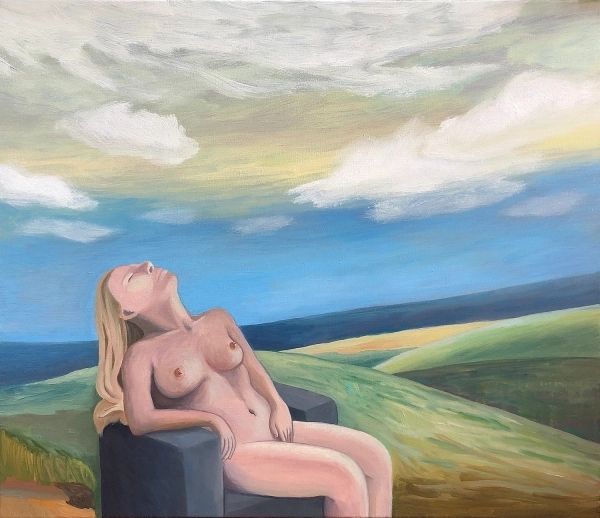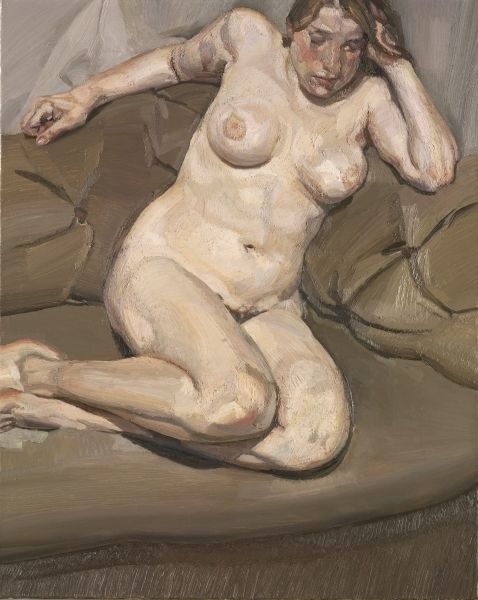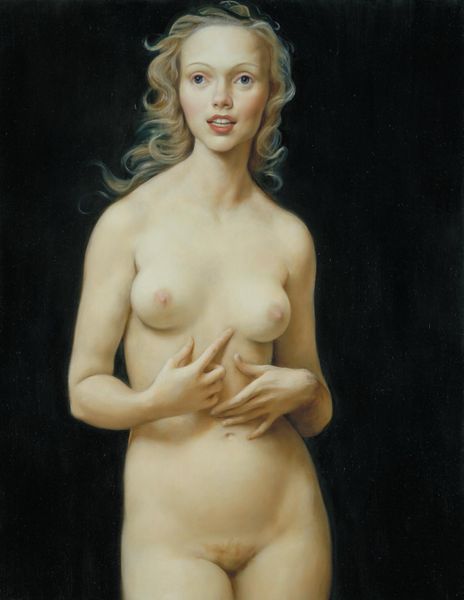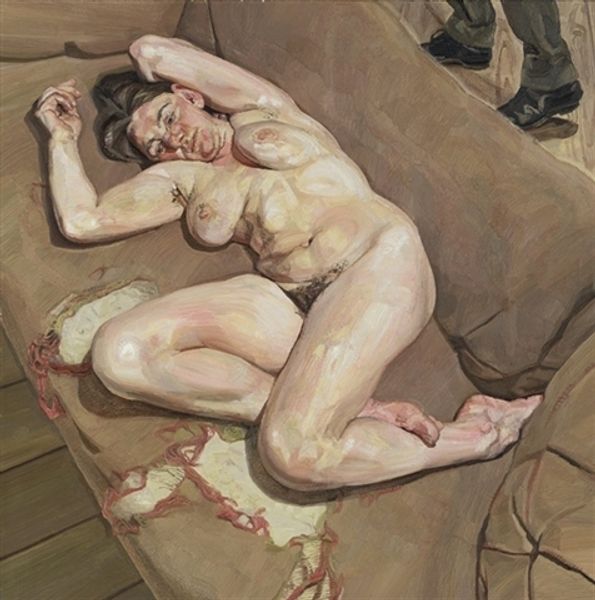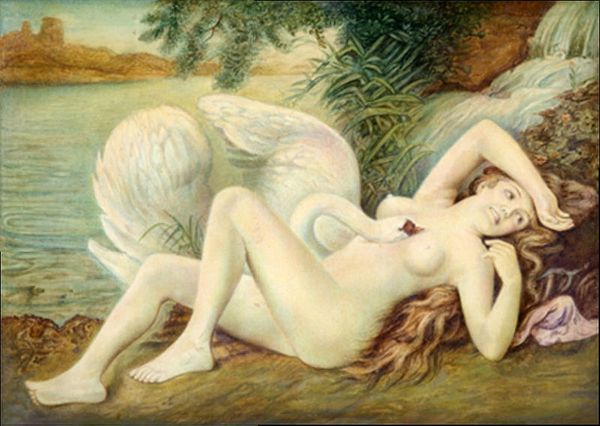
painting, oil-paint
#
portrait
#
painting
#
oil-paint
#
landscape
#
figuration
#
oil painting
#
portrait drawing
#
nude
#
portrait art
#
realism
Copyright: Charles Garabedian,Fair Use
Curator: Garabedian's "Jean Harlow" from 1964 presents a curious scene. Oil paint composes an earthy yet ethereal tableau. What are your immediate thoughts on the composition? Editor: There's a haunting, almost spectral quality. The figure seems to emerge from the landscape, blurring the line between body and environment. The artist captures the subject's aloofness, even in such a vulnerable pose. It’s subtly unnerving. Curator: The socio-political context is quite intriguing; this painting comes from an era grappling with ideas around celebrity and femininity. I'm particularly drawn to how Garabedian appropriates and distorts classical nude conventions within a postwar, increasingly commodified culture. What's being sold and by whom? Editor: I'm interested in the formal structure here, this peculiar layering of planes – the figure, the background landscape, the strange dark shapes jutting in on the right. Note the almost primitive handling of the figure's form against the sophistication in certain sections. It creates visual friction. Curator: Considering that Garabedian initially embraced more overtly figurative works, his eventual incorporation of non-traditional materials signals a desire to challenge notions of high and low art. By deliberately adopting methods reminiscent of “outsider art,” he questions labor conditions of what artmaking ought to entail. Editor: Let's focus on color. The limited palette—pale flesh tones juxtaposed with greens, browns, and the stark blacks—evokes a somber mood. The stark rendering highlights both beauty and decay, reflecting what I suspect the artist wanted to portray, that complex relationship between nature and civilization. It reminds us what might be the end results to such pursuit. Curator: That tension mirrors society’s often contradictory desires of deifying or dismantling celebrity figures. He isn’t merely painting a nude; Garabedian stages it in relation to industry and our consumption. What did this actress signify when so few were permitted to be stars? Editor: Ultimately, this composition compels viewers to confront how meaning lies not just in the subject depicted but in formal decisions such as texture, light, and compositional strategy to decode its content. The unsettling aesthetic opens a way to rethink representation. Curator: Agreed. Through considering process, medium, subject, this artwork becomes not merely about aesthetics but an exploration of material conditions of how humans find meaning. Editor: Yes, a rich visual text layered for endless investigation and discussion, all starting from simple observations.
Comments
No comments
Be the first to comment and join the conversation on the ultimate creative platform.
